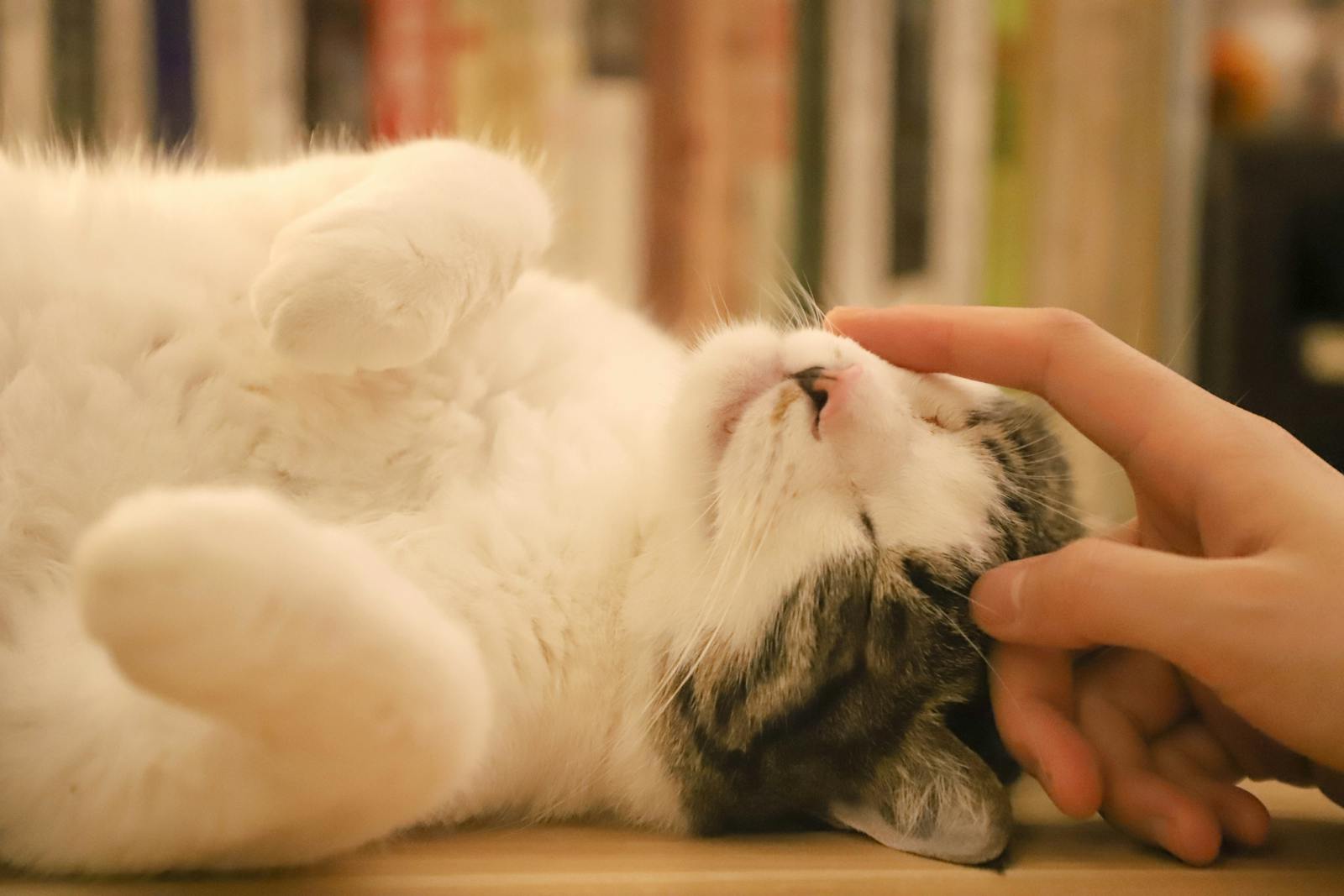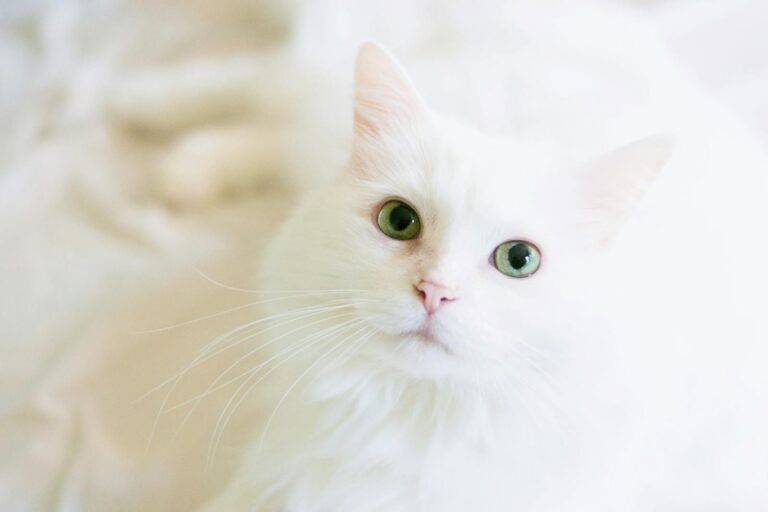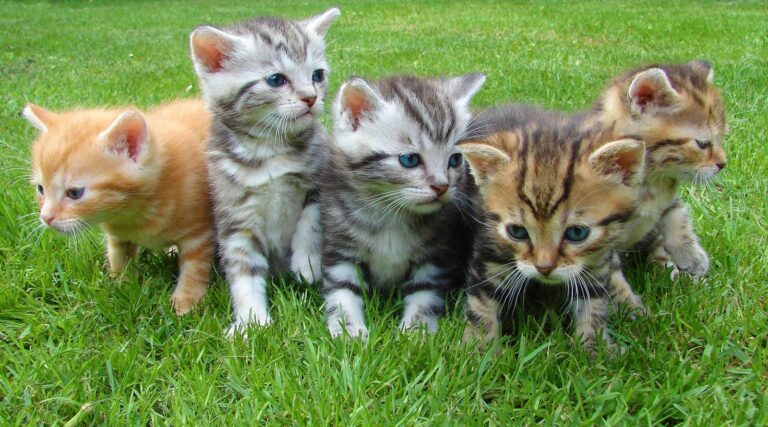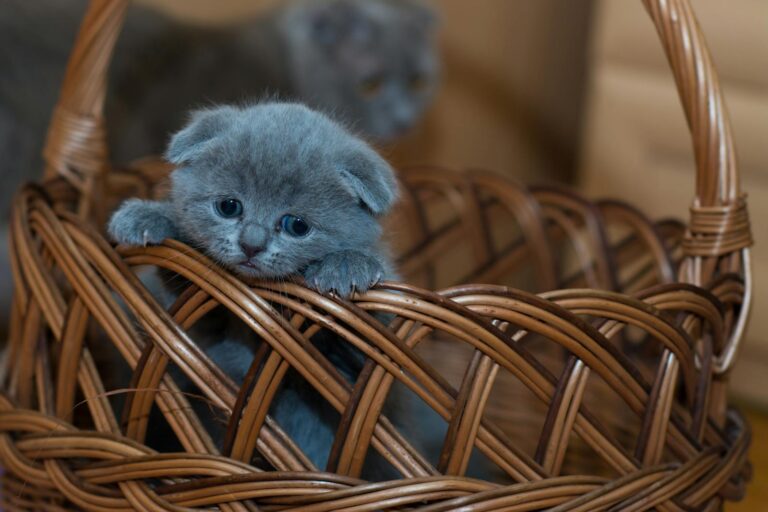Understanding Feline Obesity: Causes and Solutions
Understanding Feline Obesity: Causes and Solutions is a pressing issue that cat owners must address. As our feline companions become increasingly sedentary and pampered, the threat of obesity looms larger than ever. This article delves into the multifaceted nature of feline obesity, unpacking its causes, health risks, and actionable solutions to help you maintain your cat’s optimal weight and overall well-being.
Feline Obesity: Defining the Scope of the Problem
Feline obesity is not just a cosmetic concern; it is a serious health epidemic affecting millions of cats globally. Overweight felines are at risk for a myriad of health problems that could shorten their lifespan and diminish their quality of life. Understanding the scope of this problem requires an examination of how we define obesity in cats, along with insights into prevalence rates and the implications of this condition.
Understanding Feline Obesity
Obesity in cats is typically defined as having a body weight that exceeds what is considered healthy for their breed and size by 20% or more. Unlike humans, who may face societal pressures regarding body image, cats often do not “diet” in the same way. Instead, they exhibit behavioral changes linked to their physical condition, which can result in a decline in activity level and social interaction.
The ideal body condition score (BCS) for cats ranges from 1 to 9. A BCS of 5 reflects a healthy weight, where the ribs can be felt easily but not seen, and there is a visible waistline when viewed from above. Cats with a score of 6 or higher are generally considered overweight, while a score of 8 or 9 indicates severe obesity.
Prevalence of Obesity Among Cats
Recent studies indicate that approximately 60% of cats in the United States are classified as overweight or obese. The prevalence rates vary regionally, with urban areas reporting higher statistics due to lifestyle factors such as indoor living conditions and reduced exercise opportunities.
The increasing trend of feline obesity correlates with several factors, including the growing availability of high-calorie pet food and the increased tendency of owners to indulge their pets with treats. Furthermore, many cats live predominantly indoors, limiting their natural instinct to hunt and explore, leading to a sedentary lifestyle that fosters weight gain.
Consequences of Ignoring Obesity
Ignoring the signs of obesity in cats can have dire consequences. While it may seem harmless initially, excess weight can lead to complications such as diabetes, arthritis, and heart disease. Additionally, overweight cats are likely to experience decreased mobility and a diminished quality of life.
As responsible cat owners, it’s vital to recognize and address obesity early on. By understanding the root causes and implications, you can take proactive measures to ensure your feline friend remains healthy and happy.
Key Contributing Factors to Weight Gain in Cats
The journey to understand feline obesity involves identifying various factors that contribute to weight gain in our furry companions. Multiple elements intertwine to create an environment conducive to excessive weight accumulation, ranging from dietary habits to genetics and lifestyle choices.
Nutrition and Caloric Intake
The foundation of any weight management plan begins with nutrition. Cats require a balanced diet that meets their specific caloric needs based on their age, weight, and activity level.
When it comes to feline nutrition, it’s crucial to consider:
- Quality of Food: High-quality cat foods provide essential nutrients without unnecessary fillers. Many commercial cat foods contain high levels of carbohydrates and low-quality ingredients that can lead to overeating.
- Portion Control: Owners may inadvertently overfeed their cats by leaving food out all day or not measuring portions. This creates an environment where free feeding can lead to excessive calorie intake.
- Treats and Snacks: It’s easy to overlook the calories in treats. Regularly sharing human food or snacks can significantly increase a cat’s daily caloric intake, contributing to weight gain.
Being mindful of these aspects can help you better manage your cat’s diet and prevent obesity.
Activity Levels and Lifestyle
Cats are naturally active creatures that thrive on play and exploration. However, many modern felines lead sedentary lifestyles, particularly those that live exclusively indoors. This lack of physical activity significantly impacts their weight.
Consider the following factors:
- Indoor Living: Indoor cats may miss out on natural hunting and exploration activities that keep them physically fit. Creating an engaging environment with toys and climbing structures is essential to stimulate their instincts.
- Boredom: Without mental and physical stimulation, cats may resort to eating out of boredom. Interactive toys and regular playtime can combat this tendency.
- Age: As cats age, their metabolism slows down, making them more prone to weight gain. Senior cats often require adjusted diets and additional encouragement to stay active.
By fostering an environment that promotes physical and mental engagement, you can help mitigate the risk of obesity in your cat.
Genetics and Breeds
Genetics also play a role in determining a cat’s predisposition to obesity. Certain breeds are more prone to excessive weight gain, influenced by their metabolic rates and behavioral tendencies. For instance:
- Persians: Known for their laid-back demeanor, Persian cats may be less active than other breeds, increasing their likelihood of becoming overweight.
- Maine Coons: Although large and muscular, Maine Coons can easily tip the scales if not monitored closely. Their inherent friendly nature may lead them to seek out food readily.
- British Shorthairs: This breed tends to have a slow metabolism, making them susceptible to weight gain if their diet is not properly managed.
Understanding how genetic predispositions affect your cat can empower you to take preventive measures tailored to their specific needs.
The Serious Health Risks Associated with Obesity in Felines
Recognizing the dangers associated with feline obesity is crucial for any owner committed to their cat’s health. Excess weight is not merely an aesthetic issue; it poses profound health risks that can drastically affect a cat’s quality and length of life.
Metabolic Disorders
One of the most significant risks of obesity in cats is the development of metabolic disorders, such as diabetes mellitus. When cats become obese, the body’s cells become resistant to insulin, leading to elevated blood sugar levels. Diabetic cats require lifelong treatment and careful monitoring to manage their condition successfully.
Additionally, hepatic lipidosis, or fatty liver disease, can occur when a cat experiences rapid weight loss after prolonged obesity. The liver becomes overwhelmed by fat deposits, potentially leading to severe illness and even death.
Joint Problems and Mobility Issues
Overweight cats are at a higher risk for developing musculoskeletal issues, particularly arthritis. The extra weight places undue stress on joints, causing pain and discomfort. This can result in decreased mobility and reluctance to engage in play, further perpetuating the cycle of inactivity and weight gain.
Veterinary studies show that losing even a small percentage of body weight can significantly improve joint health and mobility in overweight cats. Early intervention is key to preventing long-term damage and ensuring your feline remains agile throughout their life.
Cardiovascular Complications
Obesity also puts a tremendous strain on a cat’s cardiovascular system. Increased body weight leads to a heightened risk of hypertension and heart disease, which can ultimately shorten a cat’s lifespan. Cats that are overweight may also face respiratory issues due to excess fat surrounding their organs, complicating normal breathing patterns.
Regular veterinary check-ups are essential to monitor your cat’s heart health, especially if they are classified as overweight or obese.
Other Health Risks
Beyond the primary health risks mentioned, obesity can lead to a cascade of secondary complications, including:
- Skin Issues: Excess weight can hinder grooming behavior, resulting in matting and skin irritations.
- Urinary Problems: Overweight cats are more susceptible to urinary tract infections and crystal formation in the bladder.
- Hormonal Imbalances: Obesity can disrupt hormone levels, affecting reproduction and leading to other endocrine disorders.
Understanding these potential health ramifications underscores the importance of maintaining a healthy weight for your feline companion.
Accurate Weight Assessment: Identifying an Overweight Cat
Identifying whether your cat is overweight is the first step towards implementing effective weight management strategies. However, accurate assessment can sometimes be tricky, as subtle changes in appearance and behavior can go unnoticed.
Signs of an Overweight Cat
There are several visual and tactile indicators that your cat may be overweight:
- Rib Visibility: Normally, you should be able to feel your cat’s ribs without excessive pressure. If they are difficult to locate, your cat may be carrying excess weight.
- Waistline Observation: When viewed from above, a healthy cat should display a discernible waist. Lack of this feature usually indicates weight gain.
- Abdominal Appearance: Pay attention to your cat’s belly. If it appears distended or hangs lower than the rib cage, it may signal that your cat is overweight.
Monitoring these external cues regularly can help you stay informed about your cat’s weight status.
Body Condition Scoring System
The Body Condition Score (BCS) system serves as a valuable tool for assessing a cat’s weight relative to its breed and build. Utilizing a scale of 1 to 9, veterinarians can determine a cat’s health status based on criteria such as fat distribution and muscle mass.
- BCS 4-5: Optimal range, indicating a healthy weight.
- BCS 6-7: Represents being overweight, where the ribs become harder to feel, and a slight waistline is noticeable.
- BCS 8-9: Indicates obesity, with no waist and difficulty feeling ribs, signifying severe weight concerns.
Regular check-ups with a veterinarian and utilizing the BCS system is crucial for accurately assessing your cat’s weight and overall health.
Monitoring Weight Changes
Keeping track of your cat’s weight over time allows for timely interventions. Using a digital scale, weigh your cat regularly, ideally once every few weeks. Maintaining a consistent schedule will enable you to detect any sudden fluctuations in weight.
Taking note of any changes in appetite, energy levels, and activity can also provide insight into your cat’s overall health. If there are any concerning shifts, don’t hesitate to consult a veterinarian for further evaluation.
Effective Strategies for Weight Management in Cats
Managing your cat’s weight does not need to be a daunting task. Implementing a combination of dietary changes, increased physical activity, and behavior modifications can yield excellent results in achieving a healthier weight for your feline companion.
Dietary Adjustments
A nutritious diet tailored to your cat’s specific needs is paramount. Consider the following steps:
- Consultation with a Veterinarian: Seek professional advice to establish appropriate caloric intake based on your cat’s current weight and target weight goals.
- Choosing the Right Food: Opt for high-quality cat food specifically designed for weight management. Look for options that are lower in calories but rich in protein to maintain muscle mass.
- Scheduled Feeding: Establish a routine by providing meals at set times rather than free feeding. This encourages portion control and helps regulate your cat’s appetite.
Implementing these dietary adjustments can lay a solid foundation for successful weight management.
Encouraging Physical Activity
Incorporating physical activity into your cat’s routine is crucial for weight loss. Here are some suggestions:
- Interactive Play: Engage your cat with various toys, such as feather wands or laser pointers, to stimulate their hunting instincts. Aim for at least 15-30 minutes of interactive play each day.
- Puzzle Feeders: Use puzzle toys that require your cat to work for their food, making mealtime challenging and rewarding. This encourages both mental stimulation and exercise.
- Create a Dynamic Environment: Enrich your home with cat trees, scratching posts, and safe outdoor access (such as a catio) to encourage exploration and exercise.
Integrating physical activity into your cat’s daily life can significantly enhance their weight management efforts.
Behavioral Modifications
Behavior plays a critical role in maintaining a healthy weight. Addressing certain habits can lead to positive changes:
- Avoiding Table Scraps: Refrain from giving in to your cat’s begging for table food. Stick to designated cat treats to reduce caloric intake.
- Training Commands: Teach your cat commands like “sit” or “high five” during playtime. This adds structure to their routine and occupies their minds.
- Positive Reinforcement: Reward your cat for desired behaviors, such as exercising or eating healthy food, with praise or small treats to reinforce good habits.
Making these behavioral adjustments will foster a more active and engaged lifestyle for your cat.
Long-Term Solutions and Ongoing Support for a Healthy Feline Weight
Achieving and maintaining a healthy weight for your cat is a lifelong commitment. It requires continuous support, education, and adjustment of strategies to adapt to your cat’s changing needs over time.
Regular Veterinary Check-Ups
Maintaining open communication with your veterinarian is essential for long-term success. Schedule regular check-ups to monitor your cat’s weight and overall health status. Your vet can provide updated nutritional recommendations, assess any changes in health, and offer guidance on managing your cat’s weight effectively.
Tailored Weight Loss Programs
Consider enrolling your cat in a structured weight loss program offered by veterinary clinics or animal hospitals. These programs often include personalized meal plans, supervised weight checks, and ongoing support. Such initiatives can provide accountability and make the weight loss journey more manageable.
Educating Yourself and Others
Education is key to understanding feline obesity and effectively supporting your cat’s weight management efforts:
- Stay Informed: Keep abreast of developments in feline nutrition, health trends, and best practices for weight management through reputable sources such as veterinary associations and academic journals.
- Join Support Groups: Connect with fellow cat owners facing similar challenges. Online forums and local pet clubs can serve as platforms for sharing experiences and tips.
- Involve Family Members: Ensure everyone in the household understands the importance of maintaining a healthy weight for your cat. Unified efforts will boost your cat’s chances of success.
Adopting a comprehensive approach that combines veterinary care, educational resources, and community support will empower you to provide lasting weight management solutions for your feline friend.
Conclusion
Understanding feline obesity—its causes and solutions—is vital for ensuring the health and happiness of our beloved cats. Recognizing the scope of the issue, identifying contributing factors, and acknowledging the serious health risks are essential steps. Through accurate weight assessment, effective strategies for weight management, and ongoing support, cat owners can help their feline friends maintain a healthy weight and enjoy a longer, fuller life. By committing to a holistic approach, you can navigate the complexities of feline obesity and foster a thriving environment for your cherished companion.







